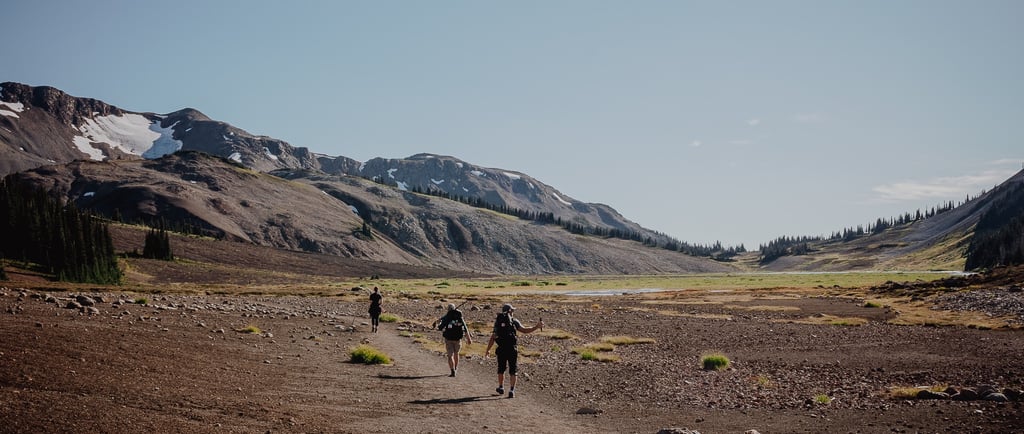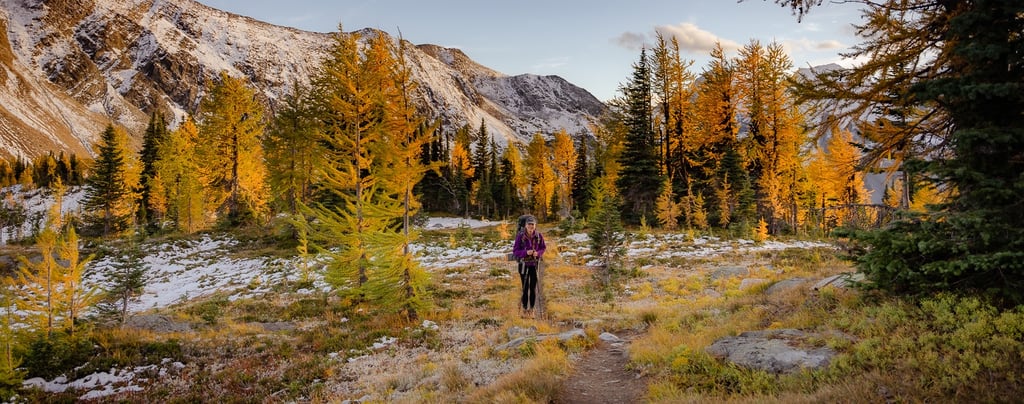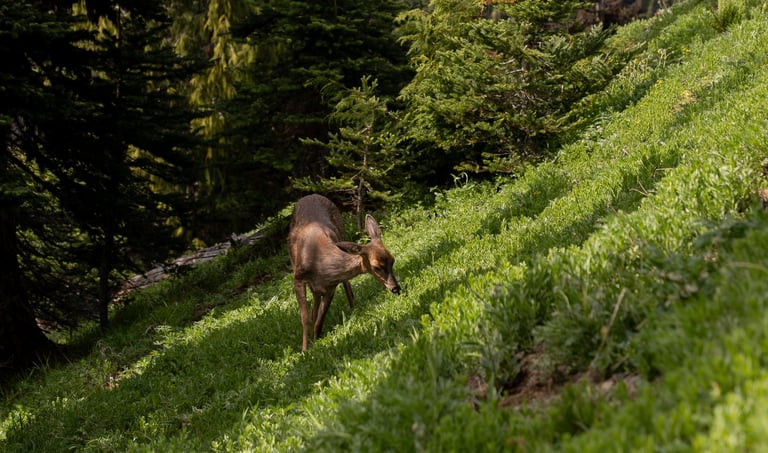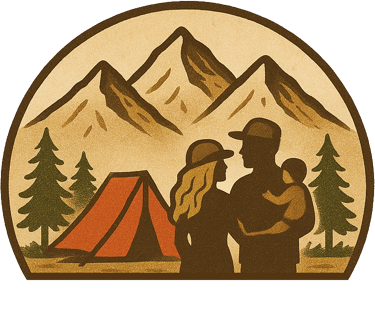Hiking Etiquette: The Ultimate Guide to Leave No Trace Principles (and How Not to Be That Person)
HIKINGBACKPACKING
11/19/20246 min read


We’re pretty sure you’ve heard someone say, “Follow the Leave No Trace principles,” but... what does that actually mean? And while we’re at it, what about being a considerate human while you’re out there?
Hiking isn’t just about the views and the snacks (although let’s not downplay snacks). It’s also about respecting the trails, wildlife, and fellow hikers so we can all enjoy nature without turning it into one big, chaotic outdoor mall. Whether you're a seasoned adventurer or someone who just got their first pair of hiking boots, understanding hiking etiquette and Leave No Trace (LNT) principles is key to making sure everyone, including nature itself, has a good time. Let’s dive into some simple, yet often overlooked, guidelines.
The Basics of Trail Manners


Right of Way: The Hiker’s Hierarchy
First and foremost, hikers should yield to those on horseback. This is crucial because horses can react unpredictably to the presence of humans. If you encounter a rider, step off the trail quietly and allow them ample space to pass. Next in line, cyclists should yield to hikers. Period.
Uphill hikers typically have the right of way. Why? Because moving uphill requires more energy and focus and it’s just polite to step aside so they can keep their momentum.




1. Plan Ahead and Prepare
Failing to plan is planning to fail, especially on the trails. Research the route, know the weather, pack the right gear, and—most importantly—let someone know your plans. One time, we didn’t tell our families we were staying overnight at Joffre Lakes. While we were stargazing and living our best lives, they were ready to call search and rescue. Whoops. Lesson learned: avoid unnecessary panic and tell someone when to expect you back.
To plan our routes and get inspiration, we use the AllTrails app. Get 30% off of your yearly membership (affiliate link).
2. Travel and Camp on Durable Surfaces
Stick to established trails and campsites. Cutting switchbacks or blazing your own path might seem adventurous, but it damages fragile ecosystems. And when setting up camp, pick a spot that’s already been used—it’s like nature’s version of recycling. You should also avoid camping too close to any water source.
3. Dispose of Waste Properly
Trash, food scraps, and even human waste need to be handled responsibly. This topic is so important we’ll probably write a whole blog post about how to eat and poop in the wild (yes, we said it). For now, remember: just because something is “organic” doesn’t mean it belongs on the ground. Banana peels? Orange rinds? How many banana trees or citrus groves do you see in the forest? None? Exactly. Do we really want bears associating hiking trails with gourmet fruit snacks? We’re guessing no.
To avoid being that person who disregards the principles of responsible hiking, carry a small trash bag with you. This principle of "Leave No Trace" emphasizes that all waste, even organic, should be packed out. In doing so, hikers maintain the integrity of the environment and uphold the natural beauty that draws many to these scenic trails.
4. Leave What You Find
Resist the urge to pick wildflowers, pocket cool rocks, or carve your initials into trees. Nature isn’t a souvenir shop; let others enjoy it in its untouched glory.
5. Minimize Campfire Impact
Use a camp stove whenever possible, but if you’re making a fire, stick to designated fire rings and always confirm there is no fire ban in the area HERE. No fire ring? Gather rocks to create a safe spot.
Just remember to always fully extinguish the fire. We’ve seen campfires reignite in the middle of the night, leaving campers scrambling to handle the situation. Make sure you take extra care to put out the fire completely, especially in windy conditions. Always—always—make sure your fire is out cold before you call it a night.
And here’s a pro tip: heat a rock from the fire, wrap it in a sock, and stick it in your sleeping bag for a cozy night’s sleep.
6. Respect Wildlife
Wild animals aren’t (unfortunately) Disney characters—they don’t need you feeding them or invading their space. Observe animals from a distance and avoid feeding them. If one gets too close, stay calm, speak softly, and back away without making eye contact.
Oh, and for the record: granola bars and Costco salted nuts are not part of their natural diet. We know that sometimes it can be very tempting to offer a cute Canada Jay a nice little salted cranberry so it stays longer on our hands, but they really should not be fed with human snacks. Feeding wildlife disrupts their natural behaviours and can create dangerous situations for both you and the animals.
7. Be Considerate of Others
Everyone’s out here for the same reasons: fresh air, good vibes, and a break from the chaos of everyday life. Don’t ruin it with loud music, trash, or blocking the trail. Share the space and keep it chill. The golden rule applies here—treat others the way you’d like to be treated.
Silence is Golden: The Dos and Don'ts of Noise Making
Listen, we get it. Nature’s great, but sometimes you want to spice it up with a little background music. The trick is to keep it personal. Headphones are your friend—your favourite tunes are not a gift you need to share with the whole trail.
Keeping noises down is particularly important during the early morning hours when many campers and hikers are seeking solitude and peace. Sunrise chats near campsites or loud stomping during wildlife active hours? Let’s just say you don’t want to be “that person.”
But here’s the thing: etiquette isn’t just about rules—it’s about being considerate. Sometimes, you might technically have the right of way, but if the downhill hiker is in a sketchy spot (loose rocks, narrow ledges, or just clinging to their dignity), maybe pause and let them get to a safe place. A little patience goes a long way in making the trail enjoyable for everyone. Bonus points if you give them an encouraging nod or a “you’ve got this!” as you step aside.
In situations where you find yourself face-to-face with a larger group of hikers, it's generally encouraged for the larger crowd to yield to those hiking solo or in pairs. If you’re in a group, resist the urge to spread out like you own the trail. Narrow trails? Single file is your best bet. And if you’re stopping for a water break, photo op, or a dramatic re-tie of your boot laces, scooch to the side so others can pass.
As for greetings, a simple “hi” or a quick nod goes a long way. Just don’t push it—if someone’s got their earbuds in or looks like they’re having a moment with nature, leave them to it.
Recognizing these rules among hikers, bikers, and horseback riders fosters mutual respect and a shared appreciation for the great outdoors. By approaching each situation with kindness and courtesy, we can all create positive experiences on the trail.
The Seven Principles of Leave No Trace
The Leave No Trace (LNT) principles aren’t just rules—they’re the secret recipe for keeping the wild wild and making sure we all get to enjoy it for years to come. Here's what they are actually about:
Why It Matters
By following these hiking etiquette tips and Leave No Trace principles, you’re not just being a responsible hiker—you’re helping preserve the magic of the outdoors for everyone. Every thoughtful step, packed-out piece of trash, and considerate interaction contributes to a world where trails remain welcoming and wilderness stays wild.
So, what’s your favorite Leave No Trace tip, or do you have a trail etiquette pet peeve to share? Let us know on instagram —we’d love to hear your stories!
And remember: Leave Only Footprints, Take Only Memories <3
Explore
Inspiring mindful adventures in nature sustainably.
Join the wandering Community
© 2024. All rights reserved.
by @wanderingintwo
